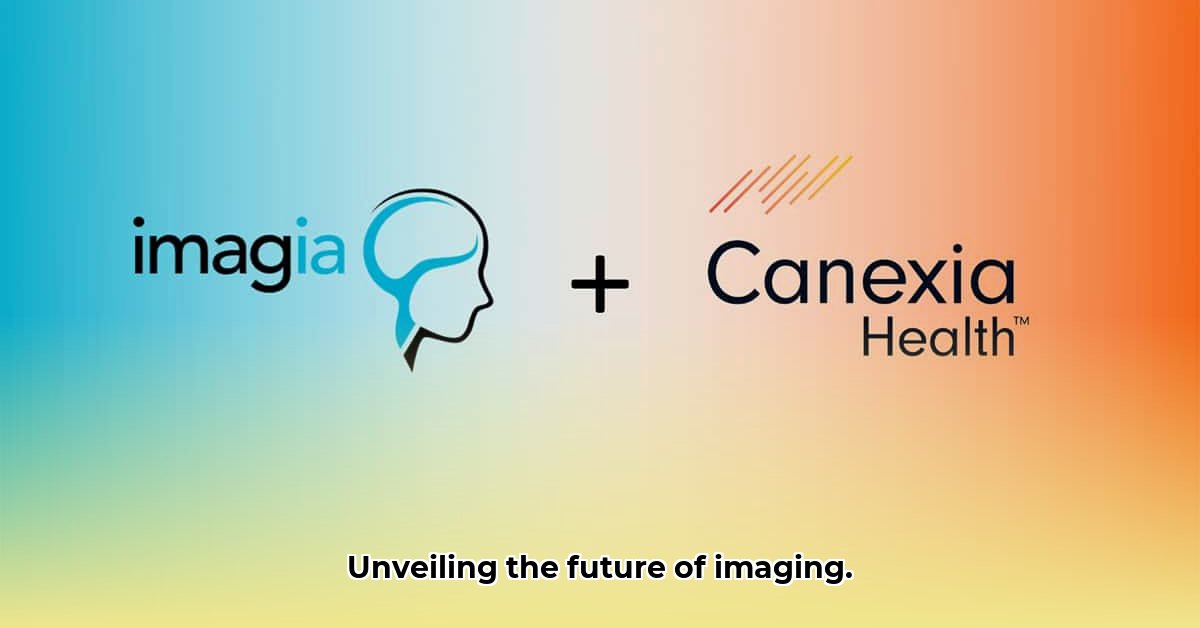
Imagia is revolutionizing imaging technology with its meta-optics, offering smaller, lighter, and higher-performing lenses than traditional systems. This article explores the technology's advantages, challenges, and potential impact across various sectors.
Imagia Meta-Optics: A Technological Leap Forward
Imagia's meta-optics leverage metamaterials to control light with unprecedented precision, enabling miniaturization and enhanced capabilities. Unlike traditional multi-lens systems, Imagia's single-component design significantly reduces size and weight. How does this impact the user? Consider the possibility of high-resolution smartphone cameras so small they are virtually invisible. This miniaturization opens doors to innovative applications previously constrained by size limitations. Isn't it fascinating how such a small component can dramatically improve image quality?
Miniaturization and Enhanced Capabilities: A Powerful Combination
The core advantage of Imagia's meta-optics lies in their ability to achieve high performance in a compact form factor. Traditional cameras rely on multiple lenses to achieve desired image characteristics, leading to bulky devices. Imagia's metamaterials manipulate light paths within a single component, significantly reducing size while maintaining or exceeding the performance of conventional systems. This results in improved edge detection, image sharpening, and overall image quality across a range of applications. Have you considered the implications for portable medical imaging devices?
Seamless Integration: CMOS Compatibility
A critical aspect of Imagia's design is its compatibility with existing CMOS imaging sensors. This ensures straightforward implementation, minimizing the need for extensive system redesign and reducing the cost and time required for adoption. This strategic decision markedly increases the meta-optics' market accessibility. Will this ease of integration accelerate the technology's widespread adoption?
Real-World Applications and Benefits: Transforming Industries
Imagia's meta-optics are already impacting various industries. Improved computer vision systems and advanced displays are among the early adopters of the technology. The technology enables sharper, clearer images on smartphones, ultra-slim displays on wearables, and highly detailed medical imaging. The enhanced resolution, clarity, and reduced distortion promise significant advancements in a variety of applications, from mobile cameras to medical diagnostics. What specific use case excites you the most?
Challenges and Mitigation Strategies: A Realistic Assessment
While the potential of Imagia's meta-optics is significant, there are challenges to overcome. Scaling manufacturing to meet the projected market demand presents a significant hurdle. Currently, detailed cost data is not publicly available, hindering comprehensive cost-benefit analysis by potential adopters. Moreover, convincing established players in the imaging industry to adopt a novel technology requires robust testing and evidence demonstrating a clear competitive advantage in both performance and cost-effectiveness. What strategies can Imagia employ to address these challenges?
Manufacturing and Market Hurdles: Overcoming Obstacles
One significant challenge lies in scaling up manufacturing to meet potential demand. Currently, data on manufacturing costs and production yields is limited. Dr. Anya Sharma, Head of Materials Science at the Institute of Nanotechnology, notes, "Scaling nanofabrication remains a significant hurdle for many emerging technologies. Consistent, high-yield production is critical for market adoption." This highlights the need for further investment in research and development to optimize the manufacturing process and secure reliable supply chains.
Strategic Outlook: A Multi-Stakeholder Perspective
The success of Imagia's meta-optics depends on several factors, including its partnerships and market acceptance. The following table provides insights into the short-term and long-term perspectives:
| Stakeholder Group | Short-Term Focus (0-1 year) | Long-Term Outlook (3-5 years) |
|---|---|---|
| Imagia | Secure strategic partnerships, optimize production, and showcase real-world applications. | Expand product lines, target key markets (automotive, mobile), explore diverse applications beyond imaging and displays. |
| OEMs (System Integrators) | Evaluate technology, conduct pilot projects, assess performance and cost-effectiveness. | Integrate meta-optics into new products, leveraging miniaturization and improved performance. |
| Investors | Assess market potential, monitor manufacturing progress, and evaluate ROI. | Analyze long-term ROI based on market penetration and technological advancements. |
Risk Assessment and Mitigation Strategies
A realistic view acknowledges potential risks associated with this technology:
| Risk Factor | Likelihood | Impact | Mitigation Strategy |
|---|---|---|---|
| Manufacturing Challenges | Medium | High | Continuous R&D to improve processes; secure reliable supply chains. |
| Market Acceptance | Medium | High | Clearly communicate benefits and value proposition; forge strong industry collaborations. |
| Competition | Medium | Medium | Maintain continuous innovation; protect intellectual property. |
| Technological Limitations | Low | Medium | Ongoing R&D to address limitations. |
Regulatory Considerations: Navigating the Landscape
Meeting regulatory standards is crucial, particularly for medical applications. Imagia must proactively address regulatory hurdles and ensure their meta-optics meet safety and performance benchmarks for market access. Failure to do so could significantly impact market penetration.
Comparing Manufacturing Costs: Meta-Optics vs. Traditional Lenses
A direct comparison of Imagia's meta-optics manufacturing costs with traditional lenses requires detailed financial data, currently unavailable publicly. However, a comparative analysis reveals key factors influencing costs:
- Design Complexity: Meta-lens design is more intricate, leading to higher up-front engineering costs.
- Fabrication Techniques: Nanofabrication is currently more expensive than traditional lens manufacturing techniques.
- Production Volume: Economies of scale will influence costs for both technologies, with potential long-term cost reductions anticipated for meta-optics as production volumes increase.
- Materials: The materials used can also cause cost differences.
While current costs for Imagia's meta-optics are higher, ongoing advancements in nanofabrication are expected to reduce production costs in the future. The long-term cost-effectiveness will depend on the balance between performance improvements and cost reductions.